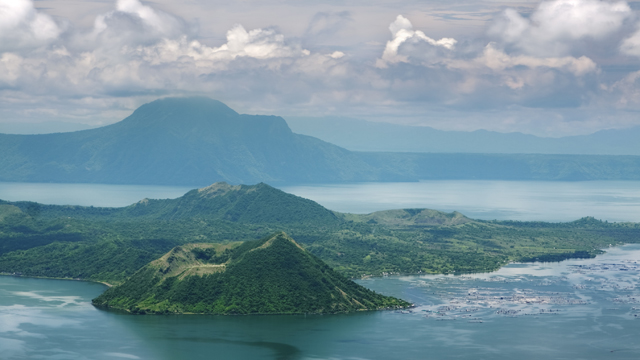
Taal Volcano emitted an "anomalously high" level of sulfur dioxide or SO2 gas, according to the Philippine Institute of Volcanology and Seismology on July 4. The agency advised nearby communities to take precaution against possible airborne ash and vog.
The Philippine Institute of Volcanology and Seismology (PHIVOLCS) said the SO2 gas emission from Taal Volcano on July 4 was at its highest ever, hitting an average of 22,628 tonnes/day. A total of 26 strong and very shallow low-frequency volcanic earthquakes associated with magmatic degassing were also recorded since July 4, 12 a.m.
[twitter:https://twitter.com/phivolcs_dost/status/1411601666642644992?s=21]
"Some of these earthquakes were reportedly accompanied by rumbling and weakly felt by fish cage caretakers off the northeastern shorelines of Volcano Island," PHIVOLCS said.
"These observation parameters may indicate that an eruption similar to the July 1, 2021 event may occur anytime soon," it added.
As such, PHIVOLCS strongly recommended that the Taal Volcano Island and the high-risk barangays of Bilibinwang and Banyaga, Agoncillo and Boso-Boso, Gulod and eastern Bugaan East, Laurel, Batangas Province remain evacuated.
"Communities around the Taal Lake shores are advised to remain vigilant, take precautionary measures against possible airborne ash and vog and calmly prepare for possible evacuation should unrest intensify," the agency said.
PHIVOLCS further advised local government units to checks on their constituents to assess the severity of SO2 gas emissions and to consider temporary evacuation of severely exposed residents to safer areas.
Taal was placed under Alert Level 3 on July 1, indicating magmatic unrest, after it spewed boiling water and magma.
Main image from Shutterstock; for illustrative purposes only.
[ArticleReco:{"articles":["86683","86673","86613","86681"], "widget":"Hot Stories You Might Have Missed"}]
Hey, Spotters! Check us out on Viber to join our Community and subscribe to our Chatbot.
Source: Spot PH
No comments:
Post a Comment